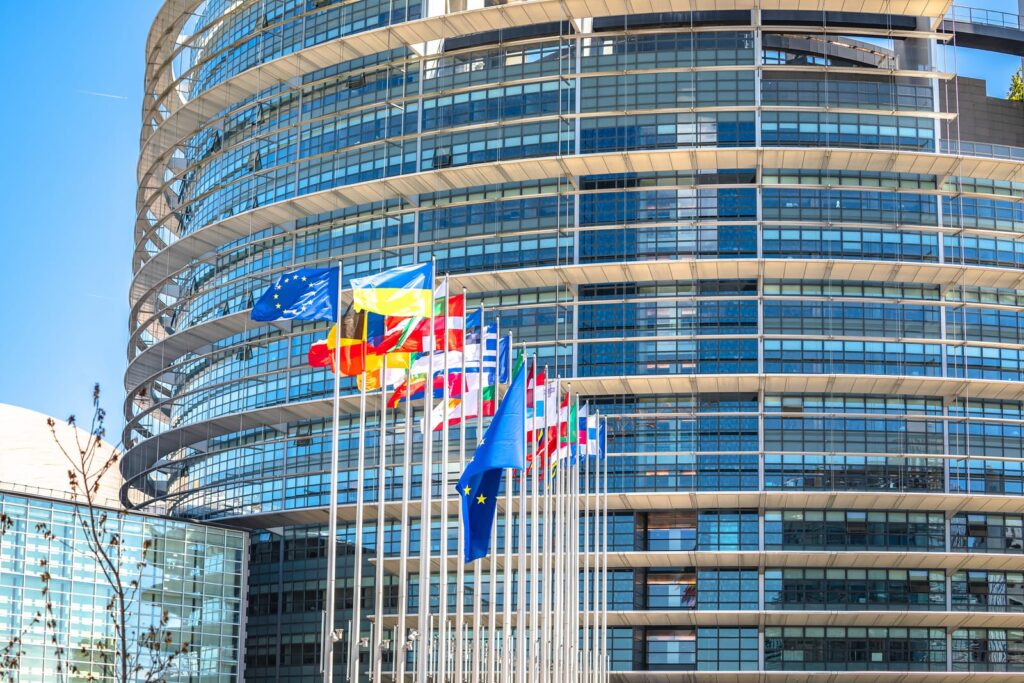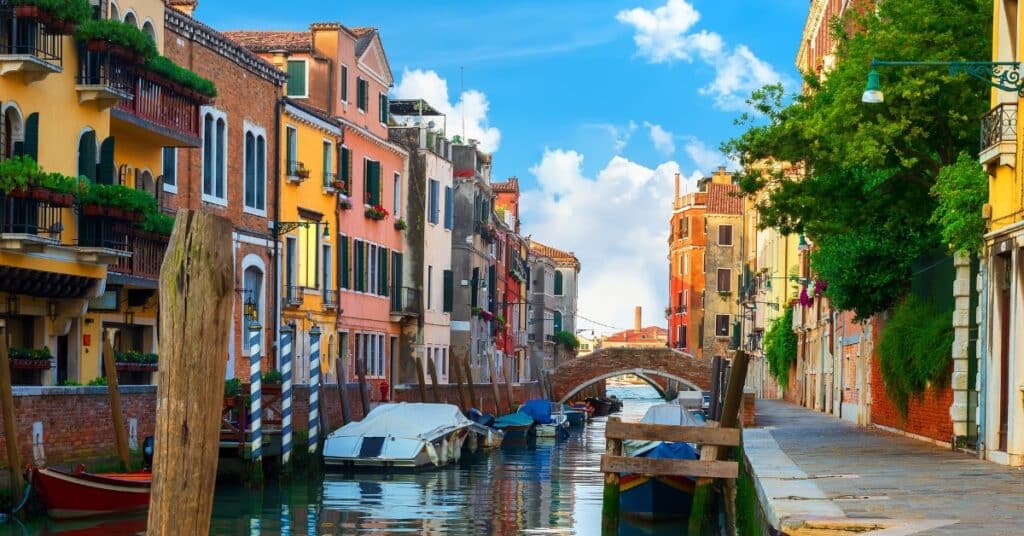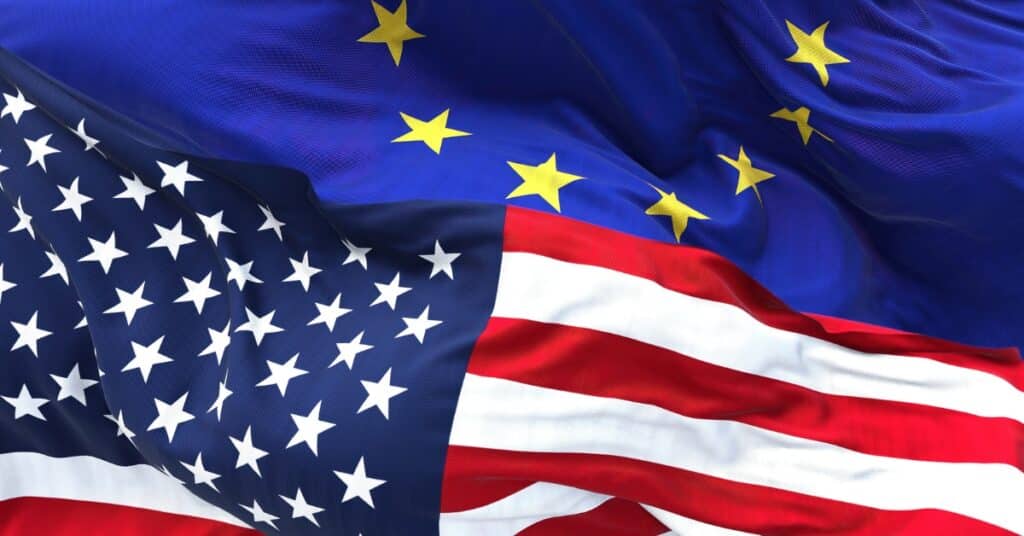The Atlantic Ocean spans roughly 4,800 kilometres at its narrowest point, but in the popular imagination it has always felt far wider.
On its eastern shore lie Europe’s long‑settled peninsulas, where ruins millennia old sit beside modern tramlines; on its western rim stands the United States of America, a comparatively young experiment in republican self‑government.
The two societies trade, ally, bicker and borrow from one another in a constant intellectual conversation—yet their histories, political systems and everyday cultures diverge in ways that still shape global affairs.
1. Divergent Historical Foundations
Europe’s story is one of layered civilisations. Celtic and Germanic tribes, the Roman Empire, Gothic kingdoms, medieval Christendom, Renaissance city‑states, Enlightenment salons, industrial revolutions and two catastrophic world wars have each left sedimentary strata of memory.
Political legitimacy in most European countries was forged in monarchy and gradually constrained by parliaments; even today, constitutional monarchies such as Spain, Sweden and the Netherlands preserve the ceremonial trappings of royalty.
The United States, by contrast, begins with an intentional act: thirteen British colonies declaring independence in 1776. America’s founding documents are not parchments slowly amended over centuries but revolutionary manifestos infused with Enlightenment radicalism.
Whereas European national identities pre‑date their constitutions, the U.S. Constitution arguably created the nation. Moreover, because massive immigration coincided with industrial expansion, the American mythos centres on reinvention: the frontier, the self‑made individual, the belief that one can start anew.
Yet both continents carry historical scars. The USA displaced Indigenous peoples and relied on enslaved Africans for nearly 250 years. Europe’s colonial empires extracted wealth abroad and imported labour that now forms vibrant diasporas.
The difference is spatial: America’s unfinished reckonings lie within its borders; Europe’s often lie offshore, returning home through migration and memory.
2. Political Architectures and Party Systems
Structurally, most European states adopt either parliamentary republics (Germany, Italy) or constitutional monarchies with strong parliaments (the UK, Spain).
Power typically resides in the legislature, and governments rise and fall by majority vote. Coalition politics is the norm: proportional‑representation electoral systems almost guarantee that five or more parties share seats.
Compromise is therefore built into European governance, and fringes gain occasional—but rarely dominant—voice.
The United States is a federal presidential republic with first‑past‑the‑post elections. Winner‑takes‑all rules channel politics into a durable two‑party mould.
Checks and balances intentionally slow legislation; divided government is common when Congress and the White House are controlled by different parties.
American voters thus expect Presidents to personify national direction, whereas Europeans often see prime ministers as primus inter pares answerable to party caucuses.
Federalism is inverted on either shore. The European Union pools sovereignty upward from nation‑states, creating a single market, shared regulations and an embryonic common foreign policy, while leaving defence and taxation largely national.
The United States began as a confederation but, after the Civil War, consolidated power in Washington: today the federal government sets currency, foreign policy, civil rights and—increasingly—education standards.
Europeans complain about “Brussels overreach,” yet EU spending is roughly one per cent of the bloc’s GDP; U.S. federal outlays hover around a quarter of national income.

3. Social Contracts: Welfare, Tax and Healthcare
Philosophical divergences are clearest in attitudes toward the welfare state. Post‑1945 Europe rebuilt under the promise of “never again,” knitting universal healthcare, robust unemployment benefits and subsidised higher education into a social safety net sometimes dubbed the “European Social Model.”
Scandinavian nations tax up to half of household income but rank highest in global happiness indices, suggesting citizens view taxes as prepaid services rather than confiscation.
Although the U.S. introduced Social Security in 1935 and Medicare in 1965, the national ethos remains sceptical of big government. Taxes are lower, but so is the safety net; Americans rely heavily on employer‑provided insurance and private pensions.
Political rhetoric frames freedom as freedom from government mandates. Europeans tend toward “positive liberty”—the capacity to act made possible by state guarantees— whereas Americans emphasise “negative liberty,” the guardrails against coercion.
4. Cultural Values and Everyday Life
Individualism versus communalism is often caricatured, yet survey data reveal consistent trends. When asked by Pew Research whether “success in life is pretty much determined by forces outside our control,” a majority of Americans disagree; Europeans—especially in southern countries—are more fatalistic.
This shapes everything from business culture (Europe prizes consensus; American firms reward assertive risk‑taking) to advertising (European campaigns stress collective benefit; U.S. ads highlight personal empowerment).
Work‑life balance diverges sharply. The EU mandates a minimum of four weeks’ paid holiday; France caps the workweek at 35 hours; Germany’s shops close early on Sundays.
In the United States the federal government guarantees no paid vacation, and full‑time workers average ten holiday days. Yet American workplaces offer flexibility in other ways, such as at‑will employment and looser dress codes.
Food culture tells a deeper story of tempo and sociability. Europeans linger over multi‑course meals, and lunch can still stretch to two hours in Spain or Italy. Americans prize speed—drive‑throughs, coffee to go—and serve larger portions. Even coffee symbolises the gap: a European macchiato versus a 20‑ounce iced caramel latte.
Religion further complicates the picture. The U.S. is both constitutionally secular and unusually devout for a wealthy nation: roughly 63 % describe religion as important in daily life. Europe, cradle of Christendom, has secularised rapidly; in the Czech Republic only a quarter say religion matters. Debates on bioethics, marriage equality and abortion therefore follow different contours across the Atlantic.

5. Identity, Diversity and Social Cohesion
Europe is a patchwork of languages, folk traditions and regional identities predating modern states. The Basque Country, Catalonia, Scotland and Bavaria nurture strong sub‑national pride.
Migration has diversified cities—Paris, London, Berlin—but the question “What does it mean to be German?” is still often answered with reference to ancestry and language.
The U.S., built on immigration, frames identity through civic ideals: anyone can “become American” by embracing the Constitution. Assimilation pressures remain real, and racial hierarchy is unresolved.
The Black Lives Matter movement exposed fault‑lines that Europeans sometimes underestimate, though Europe’s own struggles with integrating Muslim minorities or Romani populations reveal parallel tensions.
6. Cultural Production and Soft Power
Hollywood blockbusters, Silicon Valley apps and hip‑hop dominate global popular culture, reflecting America’s commercial scale and future‑oriented storytelling. Europe counters with haute couture, literature, art cinema and football leagues that command planetary fandom.
While American culture celebrates the new, European output luxuriates in heritage—think Italian slow food or UNESCO old towns. The exchange is symbiotic: Netflix streams Spanish series, and Berlin art galleries inspire Brooklyn loft aesthetics.

7. Trans‑Atlantic Misunderstandings
Different histories breed mutual caricatures. Europeans may view the U.S. as individualistic and gun‑obsessed; Americans may see Europe as socialist and stagnant.
Climate policy illustrates the misalignment: European Green Deals pursue aggressive decarbonisation, whereas U.S. federal action is hobbled by partisan stalemate—even though states like California outpace many EU members.
Diplomatically, both sides rely on NATO, but strategic cultures differ: Europe prefers multilateral institutions; the U.S. is willing to act unilaterally. These styles are rooted in geography—European states live cheek‑by‑jowl, while oceans buffer America—and in memory: Europe’s ruins warn of war’s price, while American soil has not hosted a foreign invasion on a continental scale since 1812.
Conclusion: Divergence Within Partnership
The United States and Europe are often bracketed together as “the West,” yet their contrasts are real and consequential. One emerged from centuries of crowns and cathedrals; the other from revolution and boundless horizons.
One institutionalised compromise through coalition cabinets; the other through separated branches locked in partisan duels. One normalised cradle‑to‑grave welfare; the other championed entrepreneurial freedom.
Despite the differences, the Atlantic is less a chasm than a busy thoroughfare. Jazz was born of African‑American pain but found devoted audiences in Paris; the European invention of the microchip sparked California’s tech boom.
In an era of authoritarian resurgence and planetary crises, recognising and respecting historical, political and cultural divergences may be the best foundation for renewed cooperation.
Ultimately, the tale of the USA and Europe is not a contest for superiority but a conversation between two distinct ways of organising society. Knowing each other’s stories—how they began, how they evolved—is indispensable to writing the next, shared chapter.

